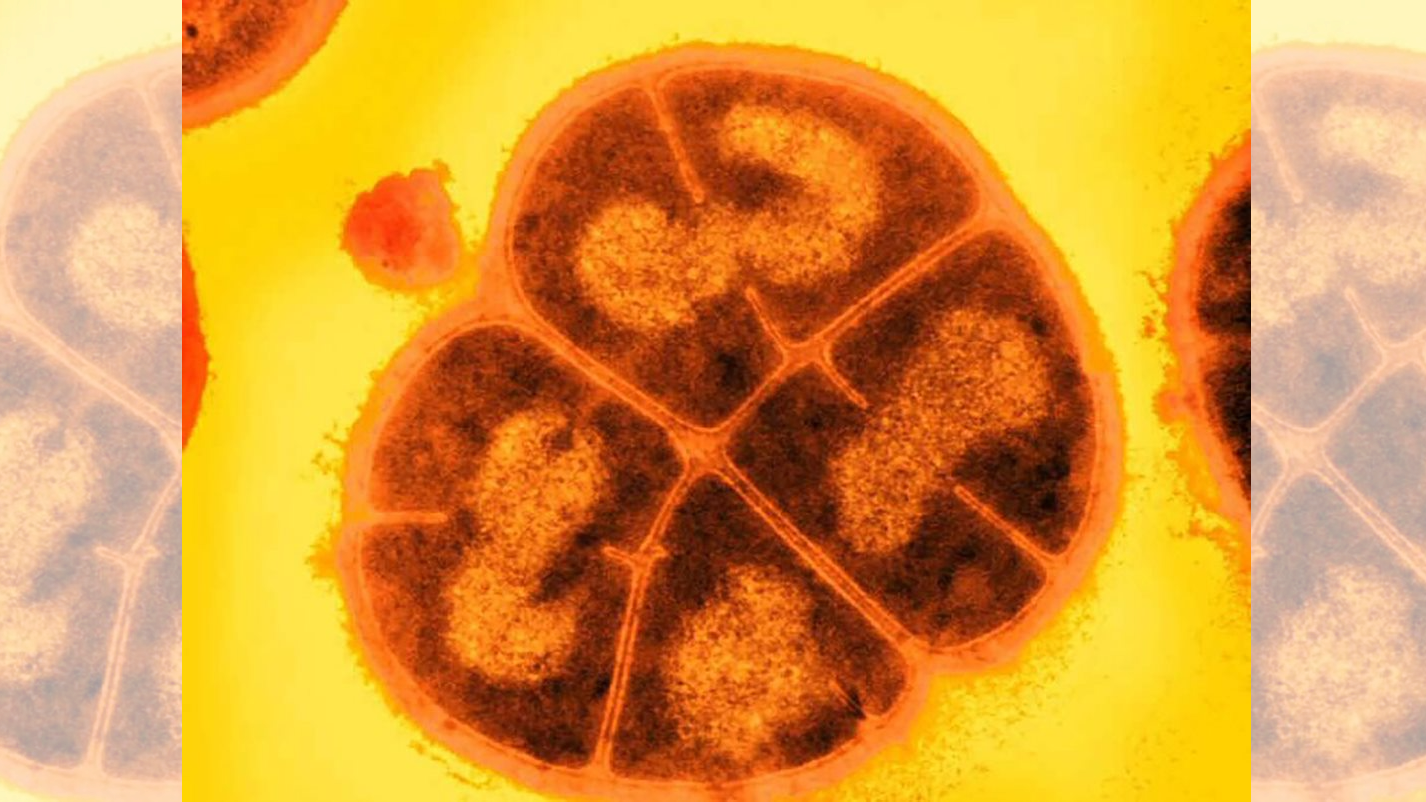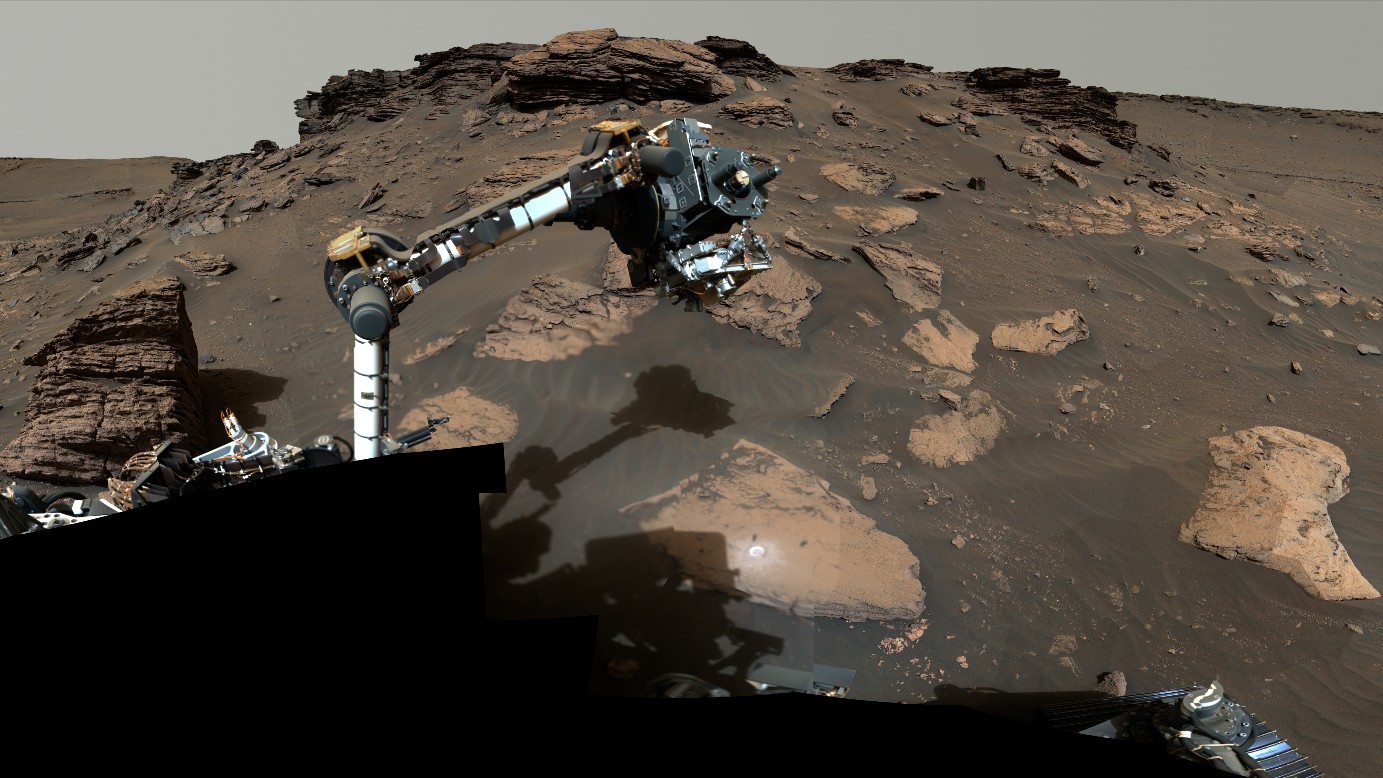Bacteria could survive underground on Mars for hundreds of millions of years, new study finds
New research suggests that signs of ancient Martian life could be out there – or rather, hidden just beneath the Martian surface, safe from harmful radiation.

As Elton John once sang, "Mars ain't the kind of place to raise your kids; in fact, it's cold as hell." But new research suggests that Martian chill could allow bacteria to survive for up to 280 million years below the planet's surface.
The finding raises hopes that traces of ancient life — or even viable organisms in suspended animation — could be found on the Red Planet someday.
In the study, scientists found that an Earth bacterium, Deinococcus radiodurans, is so resistant to radiation that it can handle the equivalent of 280 million years of the radiation present 33 feet (10 meters) below the Martian surface. The plucky little microorganism, which has been found thriving in nuclear reactors on Earth, could even last 1.5 million years on the Martian surface, which is constantly bombarded with cosmic and solar radiation.
Related: Could life on Mars be lurking deep underground?
The key to this survival is Mars' dry, cold environment. When desiccated and frozen to minus 110.2 degrees Fahrenheit (minus 79 degrees Celsius) — the temperature of dry ice and the higher-latitude regions of Mars — D. radiodurans "become phenomenally, astronomically radiation-resistant," said study senior author Michael Daly, a geneticist and radiation biology expert at Uniformed Services University in Maryland.
Resisting radiation
D. radiodurans has long been known to be a champ at resisting radiation. It's found in the human gut and in many other places on Earth, and has even survived for years in the vacuum of space. The new research, however, is the first attempt to test the bacterium's upper limit of radiation resistance when it's in a desiccated state. Previously, scientists had found that the bacterium can withstand 25,000 grays of radiation when in a liquid culture, Daly told Live Science. For comparison, a dose of 5 gray would kill a human.
Daly and his colleagues dried and froze D. radiodurans and then bombarded the bacteria with both gamma radiation and proton radiation, mimicking cosmic radiation from deep space and solar radiation from the sun. They found that dried and frozen D. radiodurans could survive a mind-boggling 140,000 gray of radiation. That's equivalent to the dose from 1.5 million years on the Martian surface and 280 million years 33 feet beneath the surface, where the only radiation is from the radioactive decay within rocks and minerals.
Sign up for the Live Science daily newsletter now
Get the world’s most fascinating discoveries delivered straight to your inbox.
The organisms survive irradiation in two ways, study co-author Brian Hoffman, a chemist at Northwestern University, told Live Science. First, they have multiple copies of their genomes, providing a backup for any bits damaged by radiation. Second, they accumulate large amounts of manganese antioxidants, which capture damaging molecules created by radiation. The capture of these molecules prevents damage to the proteins that do DNA repair for the organism.
"The DNA is organized to be repaired, and these manganese antioxidants protect the proteins that do the repair," Hoffman said.
Life on Mars

D. radiodurans evolved on Earth, where the atmosphere protects the planet and its organisms from the worst radiation. (The bacterium probably evolved to withstand damage during dry periods, and the radiation resistance is just a side effect of that evolution, Daly said.) Any Martian bacteria would have had to evolve in an environment without that protection and likely would have had to evolve similar radiation resistance, Hoffman said.
Mars has not had widespread liquid water for 2 billion years, so even if ancient life did evolve there, 280 million years is still too short to suggest that the planet hosts a plethora of bacteria just waiting to spring back to life. But because Mars has a very thin atmosphere, meteorites rain onto the planet's surface regularly, Daly said. The heat and liquid water released by those impacts could potentially wake up dormant bacteria in the subsurface and allow for a temporary flourishing of life.
Even if this temporary oasis theory isn't true, the long-lasting potential of bacteria on Mars means that bits and pieces of ancient life could still be present as traces in the rocks, Hoffman said. DNA and other signatures of life could exist as fragments, even if the organisms were long-dead.
The findings also have implications for preventing Mars from becoming contaminated with Earth bacteria, according to the study authors. Any D. radiodurans that hitched a ride on a Mars rover would likely survive the trip from Earth to the Red Planet. (Other microorganisms, such as Escherichia coli and some Bacillus species, could also last thousands of years on the Martian surface if dried and desiccated, the researchers found.)
As more missions aim to return samples from Mars to Earth, it will be important to ensure that Earth microorganisms aren't accidentally hauled to Mars and then mistaken for extraterrestrials, said John Rummel, a senior scientist at the SETI Institute and former planetary protection officer for NASA. Rummel was not involved in the new study, but he oversaw its editing at the journal Astrobiology.
"The round-trip tourist organism is a problem here," Rummel said. "And we have to be careful about how we deal with that."

Stephanie Pappas is a contributing writer for Live Science, covering topics ranging from geoscience to archaeology to the human brain and behavior. She was previously a senior writer for Live Science but is now a freelancer based in Denver, Colorado, and regularly contributes to Scientific American and The Monitor, the monthly magazine of the American Psychological Association. Stephanie received a bachelor's degree in psychology from the University of South Carolina and a graduate certificate in science communication from the University of California, Santa Cruz.









